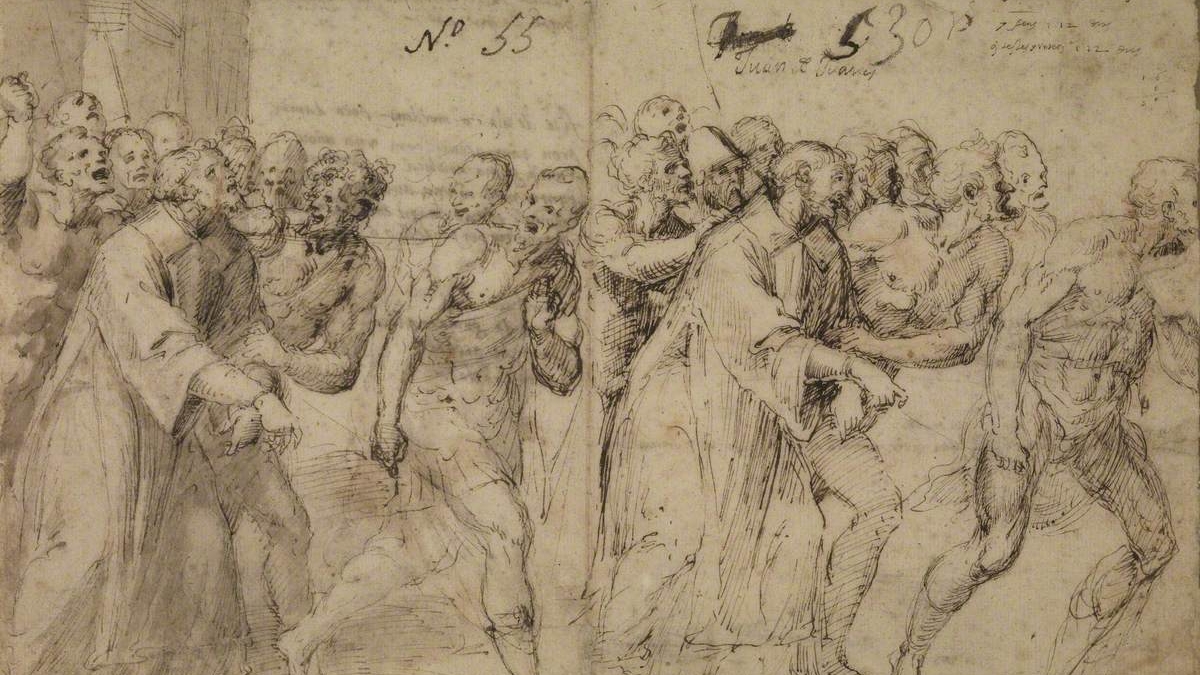
The Spanish Line: Drawings from Ribera to Picasso
13 October 2011 – 15 January 2012
This exhibition, held at The Courtauld Gallery from 13 October 2011 to 15 January 2012, explored the rich, intriguing and varied territory of Spanish drawings, a field that remains relatively little known. The Courtauld Gallery holds one of the most important collections of Spanish drawings outside Spain, totalling approximately 100 works ranging from the 16th to the 20th centuries. A selection of some 40 of the finest and most representative drawings has been chosen for the exhibition. They include examples by many of Spain’s greatest artists, such as Ribera, Murillo, Goya and Picasso. The exhibition also invited visitors to explore lesser-known treasures from the Golden Age of Spanish art created by Francisco Pacheco, Antonio Garcia Reinoso, Vicente Carducho, Antonio del Castillo and others. Many of these works have never previously been exhibited and here they were presented in the light of important new research.
The Spanish Line was the first substantial exhibition on the tradition of Spanish draughtsmanship to take place in London and reflects the growing scholarly interest in the subject. The exhibition marked the completion of a four-year research project and the publication of a complete scholarly catalogue of The Courtauld Gallery’s collection of Spanish drawings. In many public collections ‘Spanish school’ was often used as a convenient label for anonymous drawings, frequently from other countries and of lesser quality. Significant discoveries are still regularly made and The Courtauld’s exhibition aimed to stimulate further discussion and research in this exciting field of study.
The Courtauld Gallery’s collection has its origins with the MP and celebrated Hispanist Sir William Stirling Maxwell (1818-78), whose pioneering Annals of the artists of Spain (1848) helped lay the foundations for the later scholarly study of Spanish art. Sir Robert Witt (1872-1952) acquired a substantial part of the Stirling Maxwell collection when it came on the market. Witt was able to expand the group with further acquisitions, often made for small sums and against prevailing taste. In 1952 they formed part of his magnificent bequest of approximately 3,000 drawings to The Courtauld Gallery.
The exhibition is arranged in broadly chronological order, emphasising various aspects of Spanish draughtsmanship. The first highlight is a rare double-sided sheet of studies for Saint Stephen taken to his martyrdom, by the Renaissance artist Juan de Juanes. It was produced in preparation for an altarpiece which is celebrated as one of the early masterpieces of Spanish art (now in the Museo del Prado in Madrid). The back of the drawing gives rare insight into Spanish workshop practice in the 16th century, as it includes recipes for the painter’s materials and contractual information about the altarpiece, here fully deciphered for the first time.
Other early drawings testify to the important role of the Italian High Renaissance as a model in Spain: Pablo de Céspedes, for example, captured a figure from Michelangelo’s Last Judgment soon after its completion, in a meticulously modelled pen and ink drawing. Jusepe de Ribera was one of several 17th century artists to participate in the exchange between Italy and Spain. Known as ‘Lo Spagnoletto’ (the little Spaniard), he settled in Italy as a successful follower of Caravaggio. His Man tied to a tree is one of the most arresting and mysterious images in the exhibition.





